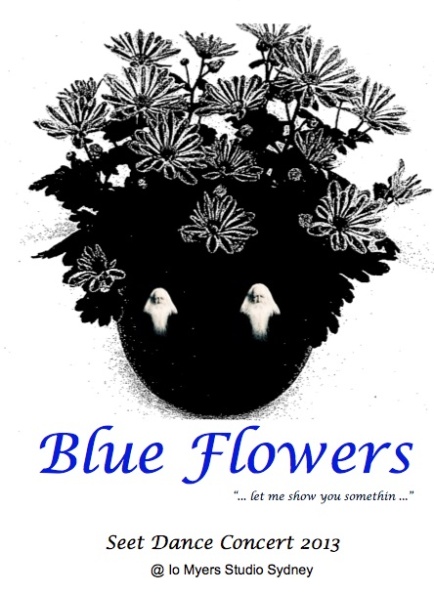This Saturday my contemporary dance students (age 5 to 12) are performing at Io Myers Studio in Sydney. Our concert is titled “Blue Flowers”, a reference to the hip hop classic of the same name by Dr Octagon aka Kool Keith. This track is used by my ballet kids … edgy. Along with Kool Keith, several other visionary composers/musicians appear on the bill … Philip Glass, Jean-Baptiste Lully, Glenn Gould, Wu-Tang Clan. Most featured is Moondog, “the Viking of 6th Avenue”.
Here ia a short essay about Moondog and the other music in our concert, written by Michael Crewdson:
Notes on Moondog (Louis Thomas Hardin) 1916–1999
In the Seet Dance 2013 concert “Blue Flowers,” Charemaine is using music of composers and musicians whose lives and works are infused with an outsider and street spirit. None lives up this more than Moondog, the American composer who lived on the streets of New York City dressed as a Viking. Tall, bearded, blind and often wearing a horned helmet, Moondog was Manhattan’s most famous street musician. During the 1950s and ’60s, he was a constant presence on 6th Avenue, performing his strange compositions to passersby who viewed him as an eccentric and imposing street person.
Moondog’s outfit sprang from his belief in the Norse gods Odin and Thor, and it also mirrored mythical aspects of his own life. He spent much of his youth in the wilds of Wyoming—his father, a renegade preacher, was exiled there by the Episcopalian Church to preach to cowboys, ranchers, and Native Americans. On one occasion, the young Hardin had a drum lesson sitting on the lap of Chief Yellow Calf, an Arapaho Indian leader (the Arapaho were one of the Plains Indian tribes that defeated General Custer). Later, Hardin attended a Blackfoot Indian Sun Dance in Idaho in which participants made music and danced for three days without food or sleep. While his melodies were firmly in the Western Classical tradition, Native American rhythms would echo through his compositions during his musical career. This fusion of styles is true of “Heimdall Fanfare” which is used as procession music in this concert.
As a teenager, Hardin lost his sight when a dynamite blasting cap he was playing with exploded in his face. This accident, as tragic as it was, sent him on his musical path. Hardin attended the Iowa School for the Blind where he excelled in music. He arrived in New York City in the 1940s and remained for three decades scratching out a living by busking. In 1947, he renamed himself Moondog after a dog he encountered in Missouri “who used to howl at the moon more than any dog I knew of.” He was homeless for much of his time in New York but lived with Philip Glass for a short span when he recorded a few songs with the future composer. Years later, Glass would write of Moondog, “he personified the maverick, solitary hero composer…”
Discovered by jazz musicians like Charlie Parker and Benny Goodman as well as members of the New York Philharmonic Orchestra, Moondog had highbrow respect but never mainstream success. His LPs, which mingled classical music, jazz, and Native American rhythms all wrapped up in an epic visionary sound, could not be easily categorized and therefore did not sell well. He lived in poverty most of his life.
Moondog was the original DIY musician. He constructed his own instruments, including the wooden percussive trimba. He built his own dwelling in upstate New York, lugging logs with rope looped around his head. He even made his own clothing, sewing together squares of cloth.
Kerrie Van Lambaart, who designed the look for the concert, used images of Moondog on the street of New York City to inspire the costumes. “I wanted to give the kids a Moondoggy look,” Ms. Lambaart said. “But updated to the 21st Century and transplanted to Australia.”
The other composers/musicians have a similar outsider and street spirit. They range from Glenn Gould, the brilliant and eccentric pianist who obsessively recorded the works of J.S. Bach, to Kool Keith (Dr. Octagon), a hip hop artist obsessed with dark imagery of hospitals, aliens, and bizarre hybrid animals. And much like Moondog created his own mythos, members of Wu-Tang Clan reinvented themselves by mingling Kung Fu movies with hip hop culture.
We think it’s important to celebrate the achievements of artists like Moondog who dramatically veer from the norm. Great art is as likely to arise from the streets (or from the bush) as it is from more conventional places like universities and conservatories.

